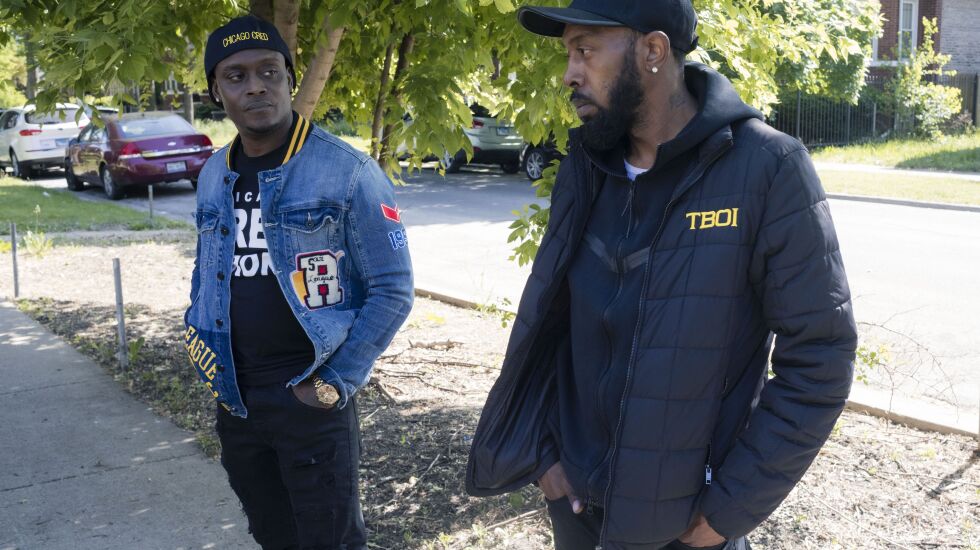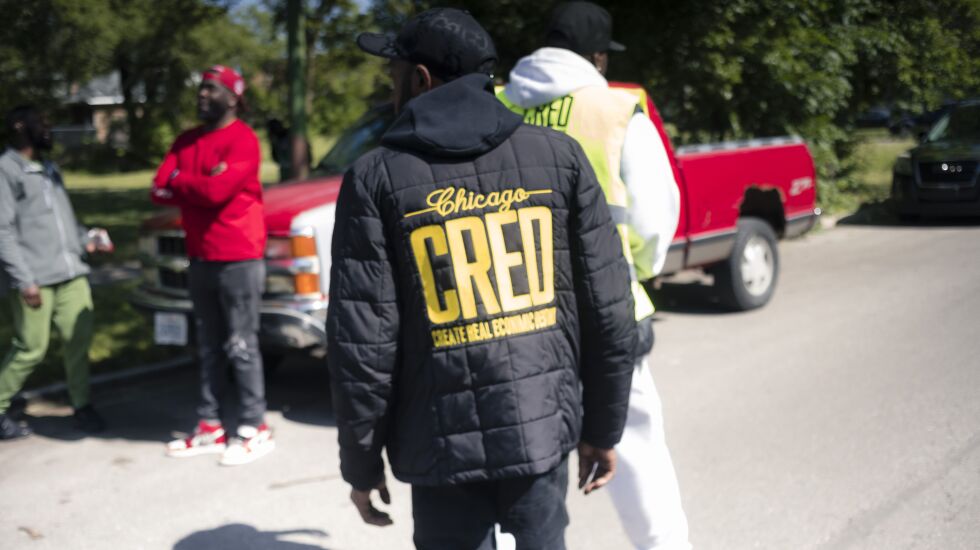
Chicagoans enjoyed beautiful weather but saw 59 shootings over the long Memorial Day weekend, the fourth straight year that the city has marked the traditional start of summer with more than 40 shootings.
Violence in the city remained near the levels that followed the COVID-19 pandemic.
From 5 p.m. Friday to 5 a.m. Tuesday, there were 59 shootings across the city, 11 of them fatal. One person was stabbed to death. The tally is only slightly lower than last Memorial Day, when the city recorded 51 shootings and 13 fatalities.
Mayor Brandon Johnson has touted $2.5 million in spending for anti-violence programs. Gov. J.B. Pritzker this month announced $11 million in funding on anti-violence programs that includes a 30-member team of outreach workers.
On Tuesday, former Chicago Public Schools CEO Arne Duncan awaited statistics on how those groups performed. Duncan’s nonprofit, Chicago CRED — Creating Real Economic Destiny — is one of more than a dozen organizations that recruit and train teams of outreach workers from the city’s most-violent pockets.
Over the weekend, 500 “peacekeepers,” were on-duty in 102 designated hot spots across the city, pockets inside the 14 neighborhoods that historically have accounted for half the city’s slayings. In areas where CRED’s workers were present in Pullman, West Pullman and Roseland, Duncan said there were two non-fatal shootings.
“Citywide, the numbers are devastating, and that can’t become normal,” Duncan said Tuesday, noting that one person was killed and three others wounded in two shootings over the weekend in Lake View, historically one of the safest neighborhoods.
“You can’t judge something by a single weekend, or a handful of incidents. It’s not just the numbers,” Duncan said.
Thursday afternoon, Cedric Hawkins walked with a group of current and former gang members, pointing out landmarks in the section of West Pullman and Roseland known to some as the “Wild Hundreds.”
A few square blocks — bounded roughly by 117th and 119th on either side of Perry Street in West Pullman — is Buff City, named for a Black Disciples member killed when Hawkins was a teenager.
The slight slope along South Michigan Avenue divides Up the Hill and Down the Hill, marking the border of two cliques of the Gangster Disciples.
“And the GDs that stay up the hill don’t like the GDs down the hill,” said Hawkins, strategic initiatives manager for Chicago CRED. “And all that can change by the day.”
He pointed out closed schools and formerly vibrant shops, and a site that was most meaningful to members of the group.
“That dude up there, he got shot right on this corner,” Hawkins said as the group strode toward State and 119th, pointing to a tall worker in a green vest.
“Nine times,” the onetime victim said.

Such hard-won knowledge of the streets is among the qualifications for the dozen or so South Siders, and similar teams of peacemakers were out in force elsewhere over Memorial Day weekend.
This year, CRED is one of more than a dozen community organizations sharing $11 million in state funding to try and prevent violence specifically by hiring residents who are found to be most likely to be shot, or shoot others. CRED’s FLIP program — for Flatlining Violence Inspires Peace — is one of several that provides $100 daily stipends for these peacekeepers.
FLIP and similar programs have nearly doubled in size thanks to funding from the Illinois Department of Human Services and local, federal and philanthropic dollars amid a surge in violent crime that coincided with the pandemic.
When FLIP workers were deployed from February to May, targeted hot spots saw a 21% decline in shootings, compared with a 14% decline citywide in the same period, according to a report by the Center for Neighborhood Engaged Research & Science at Northwestern University. In 88 of the 102 hot spots, there were no shootings when FLIP workers were on duty.
The study noted that the data are from a small sample and are not enough to draw a link between the presence of FLIP workers and shootings. But growing evidence shows FLIP and outreach programs targeting the people most involved in violence can help curb slayings, said state Sen. Robert Peters (D-Chicago), who sponsored the Reimagine Public Safety Act and paved the way for state funding for FLIP-style programs.
“These folks are working in the hottest zones of the city, taking immense risks, and it has a track record of success,” Peters said. “We have to make sure that we are trying things that are working and moving away from things that aren’t.”
Anthony Riccio, a former deputy chief with the Chicago Police Department, has seen FLIP and many of its predecessors come and go. Riccio pointed to a time the city put $2 million into CeaseFire, which hired former gang members as “violence interrupters” to suppress ongoing conflicts. CeaseFire lost city funding amid the economic downturn in 2009, never having won the trust of police brass or rank-and-file officers, Riccio said.
“You can never quantify shootings that don’t occur, so I think it’s hard to say they de-escalated anything,” Riccio said. “I think a lot of officers would prefer that money be spent other ways. … I’d rather have two police officers than 30 violence interrupters any day of the week.”

For their stipends, FLIP participants work eight-hour shifts Tuesday through Saturday. The workers get training in conflict resolution, but their credibility to mediate disputes and know when friction between groups is leading to violence comes from having been involved in street-level violence, said Terrance Henderson, manager of Outreach Operations for CRED. Some may still have a foot in the streets as CRED staff try to recruit them for an 18-month program of therapy and job training.
Henderson said that police and residents in hot spots might not recognize when FLIP workers have moved from being bad actors to peacemakers.
“There are a lot of guys out here who won’t give us the time of day,” Henderson said. “They’re completely engulfed in the warfare and the violence. These here are trying to make a change. Give ‘em a little grace.”
Recruits for FLIP are drawn from a pool, nearly all of them Black and Latino men ranging from their teens to their 30s. They’re identified by an algorithm that analyzes social networks, data on shootings and arrests, and knowledge gleaned by outreach workers on the players in ongoing conflicts. Statistically, they are 50 times more likely to be shooters or victims than the average Chicagoan.
FLIP workers tend to be in their teens and 20s and far closer to the violence, so they’re seen as better able to relate to some of the most active participants in gang conflicts, which often stem from minor beefs.
Charles Bowers, 26, is working for FLIP in Buff Town near where he grew up. He once sold drugs and ran with gang members. Standing on the porch of a house on Perry Street, he said he was able to ease a conflict between a gang member he’d known since childhood and an older man with a gun.
“I seen he had a gun, and I stepped in, just got between ‘em,” Bowers said.
How did he not end up getting shot?
“They’re my people,” Bowers said. “I know them. They know me. They know I’ve been out there, I’ve done stuff. I changed that, but I’m still a regular person to them.”








